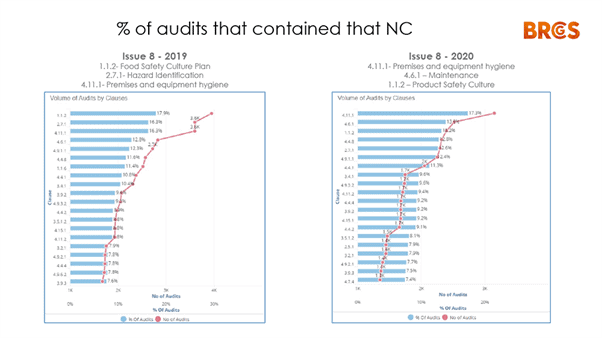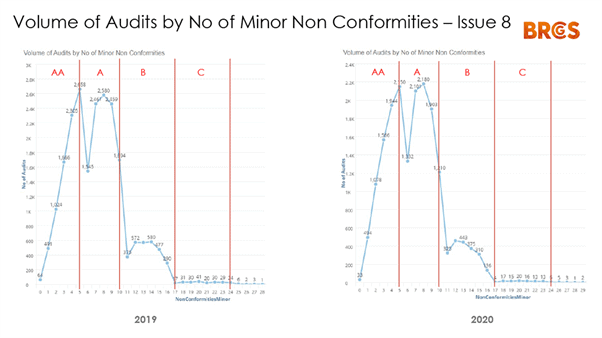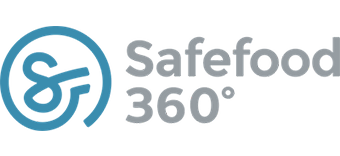BRCGS’ Lessons from the pandemic: Non-Conformities and Training
This is the final article in a three-part series about the effect the pandemic had on audits.
In our previous articles, we reviewed how audits and the techniques used to run a successful remote or blended audit in the midst of a pandemic were adapted.
What was clear with both of these themes was that the pandemic has had a massive effect on the industry.
In addition to this, we’ve identified that remote and blended audits have contributed to ensuring audits continued despite the pandemic.
Key to this was planning and preparation to ensure the audit went smoothly.
The importance of Information Communication Technology
The role of Information Communication Technology (ICT) cannot be underplayed in this regard.
Technology has a vital role to play in our food supply chains.
Businesses are increasingly turning to digital tools and platforms to support their challenges, using the power of data and automation to problem solve, improve processes and help decision making.
It also increases productivity, enhances transparency, and creates added value from operations right through to the customer experience.
Businesses are increasingly turning to digital tools and… using the power of data automation to problem solve
The pandemic has certainly led to a dramatic increase in the use of some digital tools, and they have been essential to the food industry throughout.
We know that remote auditing would not have been possible without it.
It has been used to demonstrate food safety compliance to auditors and thereby helped maintain certification for hundreds of sites across the globe.
However, it is not without its challenges.
Additional steps such as Confidentiality agreements or Non Disclosure Agreements may need to be signed, and the IAF ID3 and IAF MD4 documents understood and agreed with the Certification Body – they will talk you through this process if you are unsure.
Sites had to learn where their Wi-Fi hot spots and black spots were in advance of the audits – something most technical managers had never done before (a topic we covered in the second part of this series where we focused on remote audit techniques to help prepare for these type of issues).
We did hear about some extremely remote sites having no Wi-Fi at all – making it impossible to conduct a live remote audit.
Sites and auditors used a wide variety of hardware and software during the remote audits to demonstrate compliance and share information.
ICT however does not in any way constitute ‘digitalisation’ which is usually an enterprise-wide project requiring investment and detailed projects.
The pandemic has not necessarily accelerated digitalisation in that respect and may in fact have slowed the process down in certain businesses – we have heard of cases where companies that may have started the rollout of digitalisation have delayed it due to the pandemic taking priority.
On the other hand, companies that already had digital food safety platforms in place had a 3-fold increase in their use by existing customers.
those with digitial food safety platforms in place had a 3-fold increase in their use by existing customers
This is because they realised they could effectively manage their compliance systems remotely using the full set of features their digital platforms already offered.
In other words, the pandemic encouraged digital users to exploit a digitally based compliance solution they already had.
This supports feedback that those using remote technologies to perform internal audits enhanced their control to mitigate food safety risks during the pandemic.
This reiterates the importance of strong internal audit programs, especially when third-party audits were not possible.
Another example of a rapidly evolving digital tool used in the food industry is digital pest monitors.
These integrated pest management tools are a critical component of any food safety program.
Tools – such as rodent monitoring sensors – can protect operations from pest infestations and the related risks of disease, product loss, and recalls, and they can help ensure your site is audit-ready and compliant with complex regulations such as FSMA and Food Safety Standards.
Training
Digitalisation not only helped with compliance but it also enabled education and enhancement of knowledge.
One of the key lessons we learned is that remote working thrust Virtual Learning into the limelight, which had a huge impact in breaking down the geographical boundaries that have been traditionally associated with classroom learning.
Redesigning Learning
BRCGS made an early commitment to find ways of adapting to support our certificated sites and allow them to continue to develop their teams and to maintain technical competence levels.
This is essential as sites that are more agile, and more people-centric, will be better positioned to bounce back stronger.
By adapting our content and approach we have redeveloped our courses to make sure they are providing an even better online experience.
We reframed the content to improve online engagement and we also adapted our teaching methods, so our learners are getting the best out of the virtual classroom environment.
Redesigning training so that it can be delivered through virtual platforms has been critical to providing brands and specifiers what they seek.
Mobile Microlearning
By developing our mobile-friendly learning option, we’ve made it easy for people to train on the go.
The platform allows learners to target specific skill areas and meet their CPD requirements around their business and personal schedules.
Virtual Events
We have switched from traditional learning conferences to virtual events, which have been extremely successful.
We look forward to continuing to support our global network with virtual, in person and hybrid events throughout the year.
BRCGS Professional
With BRCGS Professional, we have learning programmes which will give you international recognition for the key skills and knowledge essential for product safety management.
And even with the pandemic, we have seen this programme continue to go from strength-to-strength.
In 2020, we welcomed new enrolments from a record-breaking number of new countries around the world and saw the highest number of new graduates from the scheme since it began.
There were 2,900 new enrolments in 2020, 104 professionals graduated, and we had enrolments from 13 new countries.
This demonstrates how virtual training is increasing and the pandemic encouraged people to continue their training during lockdown.
How the pandemic affected Non-Conformities
With all of the techniques described, the digitalisation of audits, and additional training, what was the net result?
Or put another way, did we see a change in non-conformities reported?
This is a tricky question to answer, further complicated by the fact that we are comparing two untypical years.
For most sites, 2019 was their first Issue 8 audit, which was published in August 2018.
So, their first audits were in 2019, which always affects the patterns of non-conformities as sites tend to get non-conformities against new clauses, due to the fact they need to adapt or understand how to apply them to their facility.
Then, in the following year, we had the pandemic.
This means we have two consecutive years of potentially ‘untypical’ data to try to trend.
Looking at the left-hand side graph above, clause 1.1.2 in Food Safety Culture was new in Issue 8 and immediately was the top non-conformity.
Food culture is also relatively new for our industry, as well as clause 2.7.1.
The radiological hazards bullet point was new to sites and this caused more non-conformities in positions three and five.
Looking at the right-hand side graph, the top non-conformity was clause 4.11.1 – which has been the top non-conformity for many years.
This shows that in reality that the top non-conformities are not changing that much at the moment.

Another way to analyse this is by total non-conformities by volume of audits.
Looking at the graph above comparing 2019 to 2020, we can see that the overall number of minor non-conformances allocated were slightly down year-on-year but still fairly consistent.
This suggests that despite all the challenges sites are maintaining all the food safety clauses in their sites.
It’s important to note that we do not have all of the data compiled on the remote audits yet nor do we have a statistically significant number of audits completed to make any analysis truly meaningful.
Whilst these trends do point towards a minimal impact, we will need to continue to monitor this dataset as the pandemic continues.
But regardless of what the data shows, to provide assurance to brands and maintain consumer confidence, sites have had to maintain their food safety standards during the pandemic.
Ultimately, this meant they have had to make lots of changes to sites and operations to comply with the new COVID-19 rules.
Therefore, a key learning is that the standard gives them flexibility to change systems in a controlled way to maintain food safety and the associated risks.
This reinforces how the standard is designed to help sites to manage changes in unexpected events such as a pandemic and gives us confidence that the BRCGS standards can achieve their goals in challenging times.
The pandemic has had a big effect but we have responded
In summary, the key lesson we learned from the pandemic was that we had to adapt our ways of working to ensure we continued to provide brand protection for our customers.
Although there are still many learnings to be realised, the remote audit process is working well.
Although there are learnings to be realised, the remote audit process is working well.
It has increased our reliance on virtual training, and with the success of this, it is clear online training is here to stay.
ICT is fundamental to allow the audit function to continue.
Again, test all devices, test access, and communication methods well in advance of the audit.
Perform at least one internal mock audit and then another with the auditor.
This will reduce stress levels on the day.
I hope you have found these articles useful and that they will establish a framework for your very own successful remote or blended audit in the future.











Leave a Reply
Want to join the discussion?Feel free to contribute!